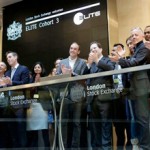Buy-siders left exposed by MiFID II bond changes

Fixed income traders are warning pre-trade transparency rules under MiFID II will undermine already diminishing liquidity, as no realistic solution to the problem currently exists.
An investigation by The Trade found traders are regularly being forced to ‘show their hand’when using trading platforms to trade bonds, as screen prices are often not executable.
Mark Winter, head of dealing at Santander Asset Management was among the many buy-siders to speak to The Trade.
He said the firm’s fixed income trading desk has experienced this, noting it to be “a worrying trend”.
He said: “It’s a worrying trend. It’s less than helpful to the buy-side when you show your hand and do so gaining no benefit. Signalling and leakage will negatively impact your ability to find liquidity later down the line.”
If regulators do not step in, the buy-side has warned it means end investors could lose out as price manipulation and information leakage could increase under the new rules.
Jean Sayegh, senior portfolio manager at Lyxor Asset Management, explained: “As soon as you need to communicate with the outside world about future trades, you will face an issue of price manipulation and decreasing liquidity.”
Many buy-side dealers are scared to speak out publically because they are frightened that it may be seen as a slight by the regulator.
One fixed income dealer – who asked to remain anonymous – explained pre-trade transparency rules simply wont work in fixed income markets.
He said: “The market is worried about an increase in price manipulation and information leakage following the implementation of pre-trade transparency rules. Those are the issues we face in a pre-trade transparent world.”
Price manipulation has been raised as a serious issue, with trades often rejected and figures shown on screens not representative of executable prices.
However, representatives of the platforms that advertise these prices maintain that the bid and offer quotes on the screen are purely to attract interest.
Jonathan Gray, head of fixed income EMEA at Liquidnet, said: “The ALLQ model is an example of where banks or liquidity providers advertise their prices.
“The bid and offer quotes… give the impression to the buy-side that there is liquidity. When you ask for a firm bid or offer however, they are often reluctant to provide one.”
A European-wide push for the electronification of fixed income transactions under MiFID II has been set out by the European Securities and Markets Authority (ESMA) with implementation beginning from 3 January 2018.
But many say that these expectations are unrealistic.
Trading consultancy Bridport & Co often handles queries from clients who are facing this particular issue.
Managing partner Jason Bell, said he often tells his clients that screen prices cannot be relied upon.
He explained: “Many market makers are acting increasingly like brokers themselves and working orders. It has become ever more important to know and understand how the street works and protecting client orders is a serious issue.
“If it becomes common knowledge a large order is being worked then it is highly probably that any bids received will be cancelled and nobody will bid for the paper.”
Source: The Trade




























